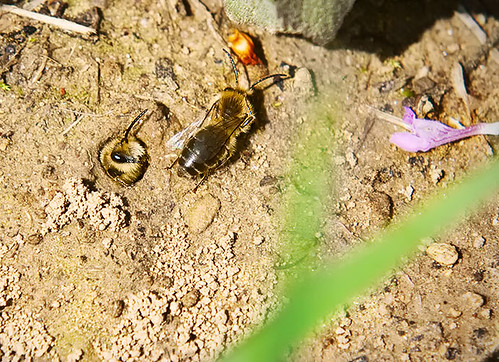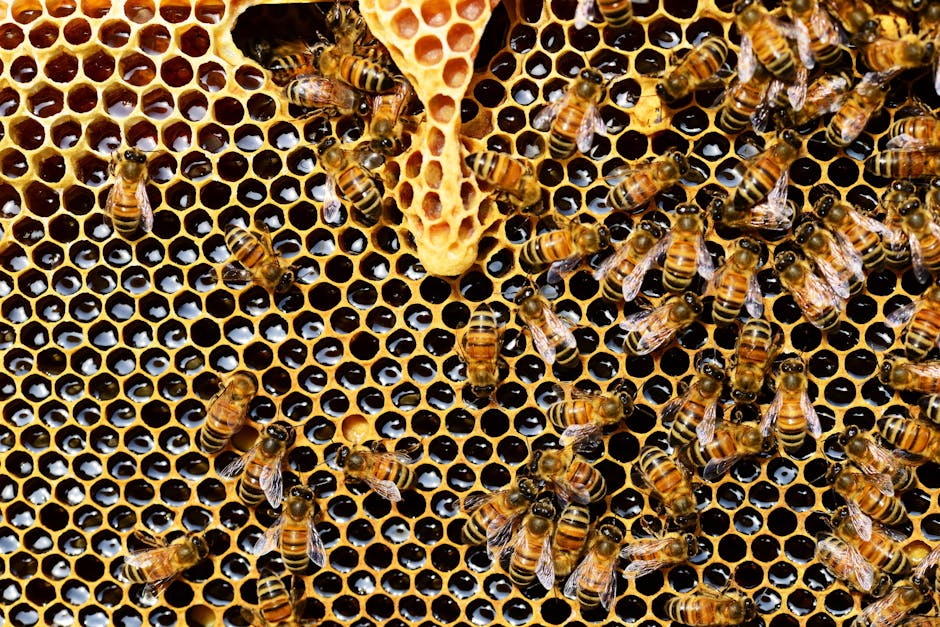Ground bees, also known as ground nesting bees or mining bees, nest in the ground rather than in trees or other structures. They are generally less social compared to other types of bees and are usually peaceful, solitary pollinators. Despite their harmless nature, they can cause concern due to their presence in lawns or walkways and their potential to damage grass. For more details on the lifecycle and behavior of these bees, check out In Defense of Ground Bees.

While ground bees are beneficial for pollination, their nests can create unsightly mounds resembling ant piles. This can damage the grass and disrupt the aesthetic and health of your lawn. Recognizing their signs—such as small mounds of dirt and increased bee activity—is the first step in addressing the issue.

| Characteristic | Description |
|---|---|
| Nest Appearance | Small mounds of dirt with pencil-sized holes (approx. 1/4 inch) |
| Bee Activity | Increased sightings around early spring to early summer |
| Location | Sandy or loose soil areas, often in sunny spots |
Several do-it-yourself methods can effectively reduce the ground bee population in your lawn. These methods use common household ingredients and gardening tips:
Gently soaking the nest entrances with water in the evening can encourage bees to relocate. This method is often effective due to the bees' preference for dry soil.
A mixture of equal parts water and vinegar can be sprayed directly on bees and their nests. This solution is non-toxic to humans and pets but can repel bees.
Pouring hot, soapy water into the nest is another method for DIY bee removal. This can drown larvae and discourage further nesting.
Once you confirm the bees have vacated, fill the holes with soil to prevent reoccupation. This helps to repair any unsightly damage caused by the nests.
If DIY methods fail or if the infestation is severe, hiring a professional bee removal service is advisable. Experts can provide a comprehensive assessment and safely remove all nests. They often use non-toxic insecticides and follow ethical practices to preserve these important pollinators. Professionals such as Ehrlich Pest Control offer such services, potentially costing up to $500 but ensuring safety and effectiveness.
When deciding on removal methods, weigh the benefits of having bees for pollination against the potential harm to your lawn's health. Eco-friendly approaches to prevent future nests include maintaining a well-watered lawn, planting deterrent plants like marigolds and citronella, and adding mulch to cover bare patches. For further insights, you can read more about Ground Nesting Bees.
Dealing with ground bees requires a balance of protecting your lawn while considering the environmental benefits these bees provide. Whether you opt for DIY methods or professional help, taking timely and informed actions can help manage the situation effectively.
Stay connected and follow us on our social media platforms for more updates and tips: Pinterest, Instagram, Twitter, and Facebook.

Immerse yourself in architecture’s most boundary-pushing ideas—where innovative home improvements meet visionary urban developments. Discover new building techniques, materials, and creative concepts that are redefining how we shape our spaces on a global scale.